Description
Name in North American Boletes: N/A
Genus: Alessioporus
Species: rubriflavus
Common Name:
Tells: Mottled cap bruises bluish & tastes bad. Yellow flesh stains blue, often w/red in the stem base. Yellow stem bruises blue, fading to brown. Yellow netting darkens lower down or if handled.
Other Information: Unpleasant taste is usually sour or bitter. May smell unpleasant too. Cap color starts dark wine-red before turning into mixed red/yellow/brown shades. The cap bruising color can vary from greenish blue to bluish black. Flesh is firm, and the staining is a darker blue. Yellow pores age through orange and into olive brown, quickly bruise blue before fading to reddish brown, & are deeply depressed in older specimens. Yellow stem has red to red brown streaks in the bottom portion, and bruises blue, aging to brown. Netting seems to bruise more red below and greenish black above. Netting can be tricky because it tends to stretch out making the top 3rd almost look like pseudoreticulation sometimes. Likes oak/pine woods, scrub and sandy soil. White mycelium.
Science Notes: The genus Alessioporus includes only three species so far: two from Europe and this one. It was not identified until 2014.
Edibility: Unknown. But if it tastes bad, why bother?
CHEMICAL TESTS:
- NH4OH (Ammonia): No data.
- KOH: Red parts of the cap skin turn amber. Flesh turns orange.
- FeSO4 (Iron Salts): No data.
Links:
 |
0 |  |
0 |  |
0 |  |
56 |


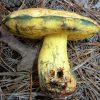
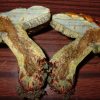
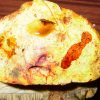

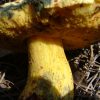
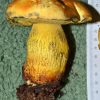
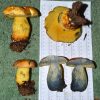
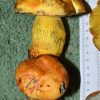
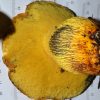
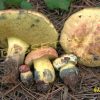




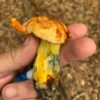
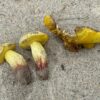

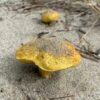
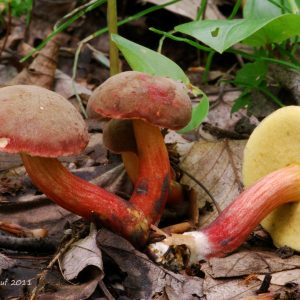
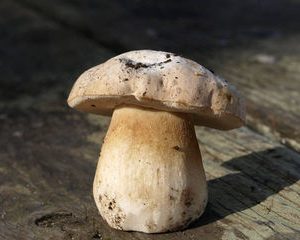
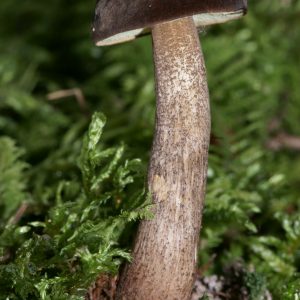

Got something to discuss?
Is it poisonous?